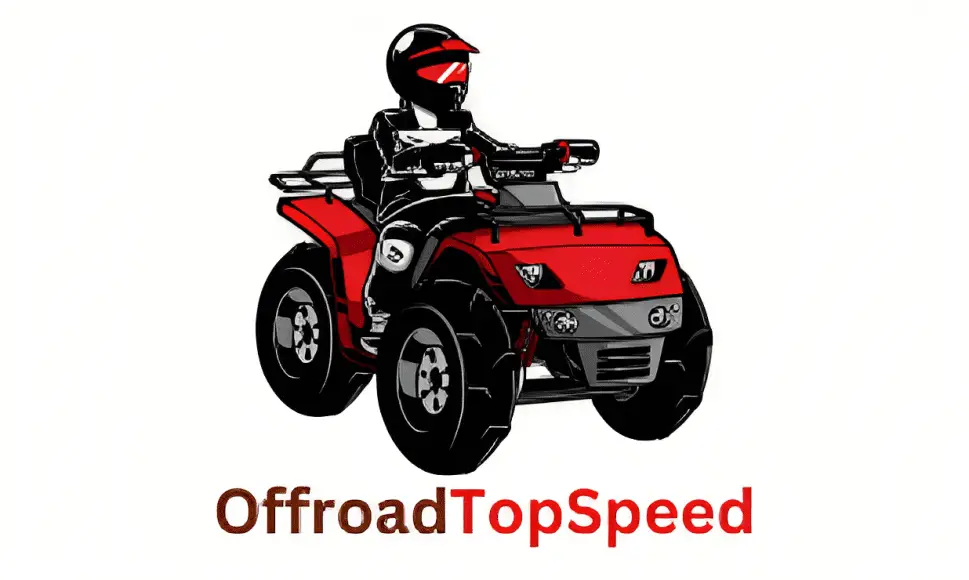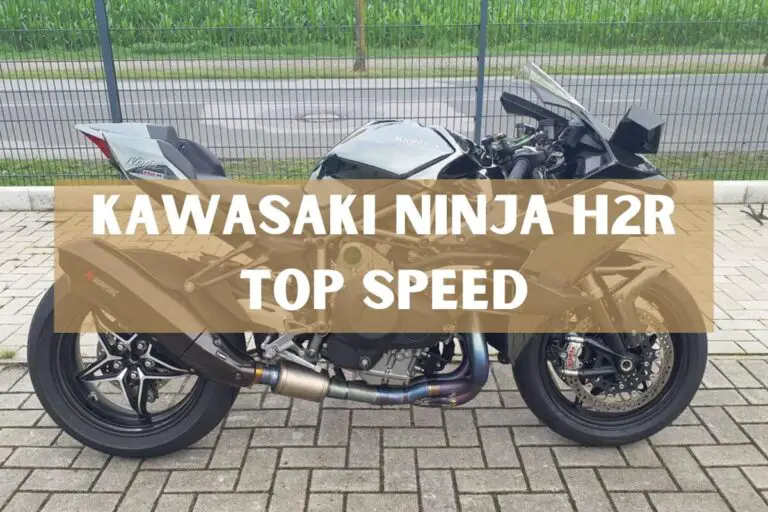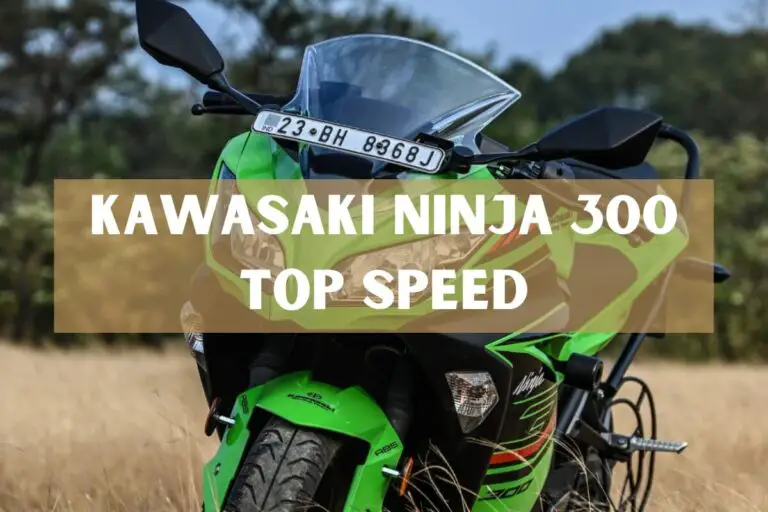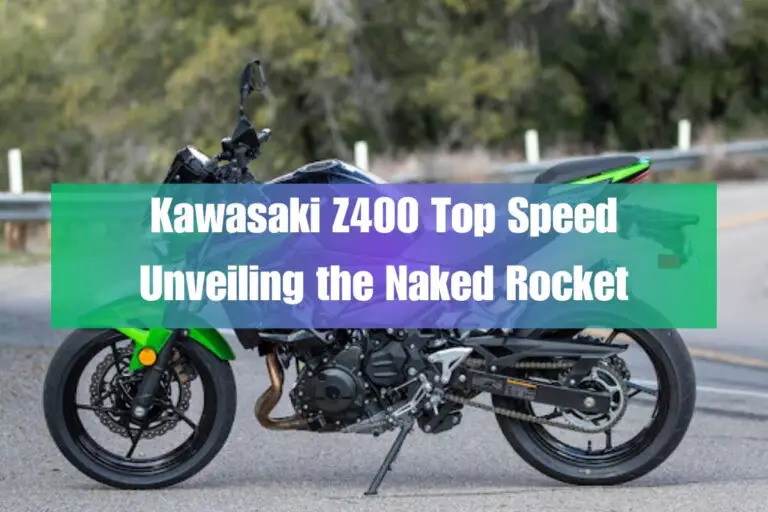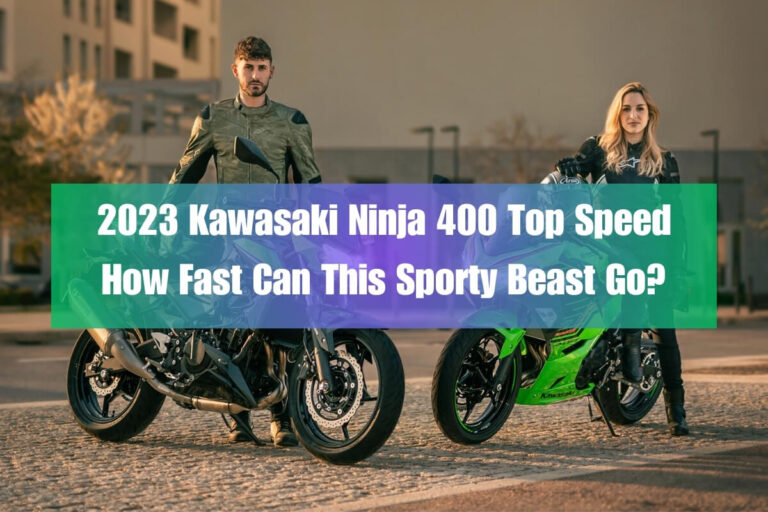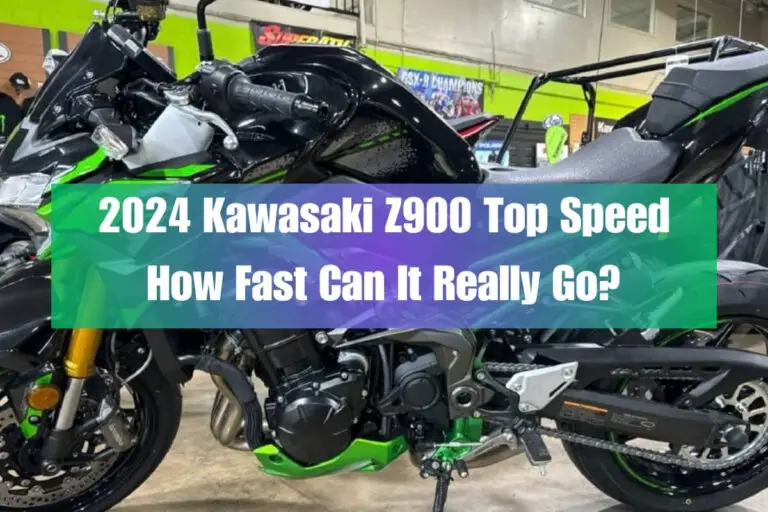Kawasaki KLR 650 Top Speed: A Comprehensive Guide
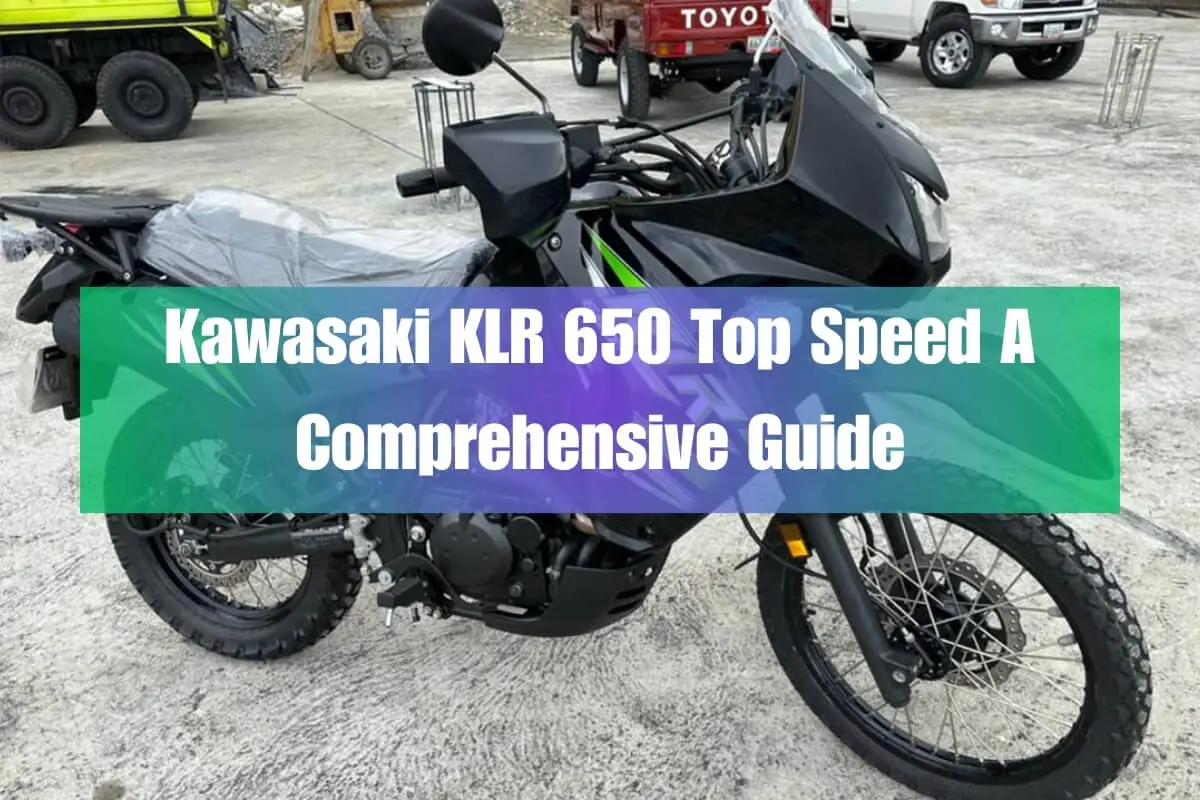
The Kawasaki KLR 650 is a beloved dual-sport motorcycle known for its versatility and rugged capabilities. Whether you’re hitting the open road or exploring off-the-beaten-path trails, this bike promises an exhilarating ride. One question that often arises among enthusiasts is: “How fast can the KLR 650 go?” In this comprehensive guide, we’ll dive deep into the top speed of the Kawasaki KLR 650, exploring its performance, technical specifications, and real-world experiences from owners.
Bike Model Overview
Kawasaki KLR 650: The Dual-Sport Adventurer
The Kawasaki KLR 650 is a true dual-purpose motorcycle, designed to conquer both paved and unpaved terrains. With its robust 652cc single-cylinder engine, durable chassis, and long-travel suspension, this bike is built for adventure.
Pricing and Availability of Different Trims
For the 2024 model year, Kawasaki offers the KLR 650 in several trims to cater to different rider preferences and budgets:
- KLR 650 Non-ABS: Starting at $6,899
- KLR 650 ABS: Starting at $7,199
- KLR 650 S Non-ABS (for shorter riders): Starting at $6,899
- KLR 650 S ABS (for shorter riders): Starting at $7,199
- KLR 650 Adventure ABS: Starting at $8,199
These trims are available now, and you can find them at your nearest Kawasaki dealership.
Key Features and Specifications Highlights
- Engine: 652cc liquid-cooled, DOHC, single-cylinder
- Transmission: 5-speed manual
- Suspension: 41mm telescopic fork (front), Uni-Trak single shock (rear)
- Brakes: Disc brakes (ABS optional)
- Fuel Capacity: 6.1 gallons
- Seat Height: 34.3 inches (32.1 inches for S models)
Performance: Unleashing the KLR 650’s Potential
Top Speed: How Fast Can the KLR 650 Go?
According to Kawasaki, the KLR 650 has a top speed of 100 miles per hour (mph) with stock gearing. This respectable top speed is achieved at around 7,300 revolutions per minute (RPM), allowing riders to cruise comfortably on highways and open roads.
It’s important to note that the actual top speed may vary slightly depending on factors such as rider weight, wind conditions, and terrain. However, most owners report being able to comfortably reach and maintain speeds between 80-90 mph.
Acceleration: 0-60 mph Time and Other Performance Metrics
While the KLR 650 is not designed for outright performance, its acceleration is respectable for a dual-sport motorcycle. According to various sources, the KLR 650 can accelerate from 0 to 60 mph in around 5-6 seconds, which is decent for its class.
The bike’s peak horsepower is rated at 40.3 hp at 6,500 RPM, and it produces a maximum torque of 39.1 lb-ft at 4,500 RPM. These figures provide enough punch for spirited riding, both on and off the road.
Riding Experience: Handling, Suspension, and Braking
The KLR 650’s top speed and acceleration are just one part of the performance equation. This bike shines when it comes to its overall riding experience, thanks to its well-tuned suspension, responsive handling, and effective braking system.
The long-travel suspension, consisting of a 41mm telescopic fork and a Uni-Trak single shock, soaks up bumps and uneven terrain with ease, providing a comfortable and confident ride. The bike’s upright riding position and wide handlebars contribute to its nimble handling, making it a joy to navigate tight trails and city streets alike.
When it comes to stopping power, the KLR 650 is equipped with disc brakes (with optional ABS) that provide reliable and progressive braking performance, ensuring you can bring this adventure machine to a halt with confidence.
Technical Specifications (Table Format)
To better understand the Kawasaki KLR 650’s performance capabilities, let’s take a closer look at its technical specifications:
| Specification | Details |
|---|---|
| Engine and Transmission | |
| Engine Type | 652cc, DOHC, liquid-cooled, single-cylinder |
| Bore x Stroke | 100.0 x 83.0 mm |
| Compression Ratio | 9.8:1 |
| Fuel Delivery | DFI with 40mm throttle body |
| Transmission | 5-speed manual |
| Final Drive | Sealed chain |
| Dimensions and Weight | |
| Overall Length | 89.8 inches |
| Overall Width | 38.2 inches |
| Overall Height | 57.7 inches (screen up) / 56.3 inches (screen down) |
| Ground Clearance | 8.3 inches |
| Seat Height | 34.3 inches (32.1 inches for S models) |
| Curb Weight | 460.6 lbs (ABS) / 456.2 lbs (non-ABS) |
| Fuel Capacity | 6.1 gallons |
| Wheelbase | 60.6 inches |
| Suspension and Brakes | |
| Front Suspension | 41mm telescopic fork, 7.9 inches of travel |
| Rear Suspension | Uni-Trak single shock, adjustable rebound damping and spring preload, 8.0 inches of travel |
| Front Brakes | Single 300mm disc with 2-piston calipers (ABS optional) |
| Rear Brakes | Single 240mm disc with single-piston caliper (ABS optional) |
| Electronics and Safety Features | |
| Anti-lock Brake System (ABS) | Optional |
What Owners Have to Say
To truly understand the KLR 650’s top speed and overall performance, it’s essential to consider the experiences and opinions of real-world owners.
Positive Reviews: Satisfied Owners’ Perspectives
Many owners praise the KLR 650 for its comfortable and smooth power delivery, even at higher speeds. One reviewer notes, “The bike is easy to ride, with a linear power curve that makes it effortless to maintain highway speeds.”
Another owner commends the bike’s stability and handling, saying, “Even when loaded up with gear, the KLR 650 feels light and nimble. The 21-inch front wheel does a great job on trails and unpaved roads.”
Negative Reviews: Addressing Common Complaints
While the KLR 650 receives plenty of praise, some owners have expressed concerns about its top speed and performance. A common complaint is that the bike can feel buzzy and vibrate excessively at speeds above 70-75 mph, making long highway stints uncomfortable.
Additionally, some riders have noted that the KLR 650’s single-cylinder engine can feel underpowered, especially when carrying a passenger or luggage, which can impact acceleration and top speed performance.
Overall Praise and Criticisms
Despite these criticisms, the overall sentiment among owners is that the KLR 650 strikes an excellent balance between on-road and off-road capabilities, making it a versatile and reliable adventure companion. Many riders appreciate the bike’s ruggedness, fuel efficiency, and low maintenance costs, even if it sacrifices outright performance for practicality.
Comparison: How Does the KLR 650 Stack Up?
To better understand the KLR 650’s top speed and performance, it’s helpful to compare it to other dual-sport and adventure motorcycles in its class.
Top Speed Comparison with Competitors
Here’s how the Kawasaki KLR 650’s top speed stacks up against some of its competitors:
- Honda XR650L: Top speed of around 90-95 mph
- Suzuki DR650S: Top speed of around 95-100 mph
- BMW G 650 GS: Top speed of around 105-110 mph
While the KLR 650’s top speed of 100 mph is respectable, some competitors offer slightly higher top speeds, although this may come at the expense of off-road capability or other factors.
Feature Comparison with Similar Bikes
In addition to top speed, it’s important to consider other features and capabilities when comparing the KLR 650 to similar dual-sport and adventure motorcycles:
- Honda XR650L: Lighter weight and better ground clearance make it more adept for hardcore off-roading, but it lacks some of the KLR 650’s on-road comfort and amenities.
- Suzuki DR650S: More powerful engine and slightly higher top speed, but less suspension travel than the KLR 650, potentially compromising off-road performance.
- BMW G 650 GS: Higher top speed and more advanced features like fuel injection and ABS, but at a higher price point and with a focus more on on-road performance than extreme off-road capability.
While these competitors may outshine the KLR 650 in specific areas, Kawasaki’s offering strikes a balance between on-road comfort, off-road capability, and affordability that appeals to many adventure riders.
Unleash the Beast: Modifications and Upgrades
For those seeking to extract every ounce of performance from their KLR 650, there are various modifications and upgrades available to increase top speed and overall performance.
Best Mods to Increase Top Speed
Some popular modifications that can help boost the KLR 650’s top speed include:
- Exhaust System Upgrade: Installing a free-flowing aftermarket exhaust can improve airflow and increase horsepower, potentially resulting in higher top speeds.
- ECU Remap or Fuel Controller: Optimizing the engine’s fuel and air mixture through an ECU remap or a fuel controller can unlock additional power and torque.
- Gearing Changes: Swapping out the stock gearing for shorter ratios can improve acceleration and potentially increase the top speed, although at the expense of increased engine revs at highway speeds.
- Windscreen Modifications: Upgrading to a more aerodynamic windscreen or adding a taller screen can reduce wind resistance and improve top speed capabilities.
Recommended Upgrades for Performance and Comfort
Beyond top speed enhancements, there are several other upgrades that can improve the overall performance and comfort of the KLR 650:
- Suspension Upgrades: Installing higher-quality or adjustable suspension components can improve handling, control, and comfort, especially when riding off-road or carrying heavy loads.
- Brake Upgrades: Upgrading to higher-performance brake pads or larger discs can provide increased stopping power and better heat dissipation.
- Seat Upgrades: Investing in a more comfortable and ergonomic seat can alleviate fatigue and discomfort during long rides.
- Luggage and Protection: Adding hard or soft luggage options, along with crash protection like engine guards and hand guards, can enhance the bike’s touring and adventure capabilities.
It’s important to note that modifications should be carefully researched and installed by professionals to ensure safety and proper functionality.
Pros and Cons: Weighing the Factors
Like any motorcycle, the Kawasaki KLR 650 has its strengths and weaknesses. Let’s explore some of the key pros and cons to consider:
Key Advantages of the Kawasaki KLR 650
- Versatility: The KLR 650 excels as a true dual-sport motorcycle, capable of tackling both paved roads and off-road adventures with ease.
- Affordability: Compared to many adventure and dual-sport bikes, the KLR 650 offers exceptional value for its capabilities and features.
- Reliability and Durability: The KLR 650 is renowned for its rugged construction and dependability, making it a trusted companion for long journeys and challenging terrain.
- Fuel Efficiency: With its frugal single-cylinder engine and generous 6.1-gallon fuel tank, the KLR 650 boasts impressive fuel efficiency, allowing for extended range between fill-ups.
- Low Maintenance Costs: Simple design and easy accessibility make the KLR 650 relatively inexpensive to maintain and service.
- Capable Off-Road Performance: Thanks to its long-travel suspension, dual-sport tires, and upright riding position, the KLR 650 is adept at tackling various off-road conditions.
Potential Drawbacks to Consider
- Moderate Top Speed: While a top speed of 100 mph is respectable, some riders may desire more outright performance for extended highway riding.
- Vibrations at High Speeds: The single-cylinder engine can produce noticeable vibrations at higher speeds, which can be fatiguing on long highway stints.
- Limited Wind Protection: The stock windscreen may not provide sufficient wind protection for some riders, especially at higher speeds.
- Dated Design and Features: Compared to more modern adventure bikes, the KLR 650’s design and features may feel somewhat dated or lacking in certain areas.
- Heavier Weight: With a curb weight of around 460 lbs, the KLR 650 is on the heavier side for a dual-sport motorcycle, which can impact its off-road agility.
- Lack of Advanced Electronics: Unlike some competitors, the KLR 650 does not offer advanced electronic rider aids like traction control or multiple ride modes.
While these potential drawbacks are worth considering, many riders find that the KLR 650’s strengths outweigh its limitations, especially given its affordable price point and versatile nature.
Alternatives: Exploring Other Options
If the Kawasaki KLR 650 doesn’t quite meet your needs or preferences, there are several alternative dual-sport and adventure motorcycles worth considering.
Top Alternatives in the Dual-Sport Class
- Honda XR650L: A lightweight and nimble dual-sport bike with excellent off-road capabilities, but lacking some of the on-road comfort and amenities of the KLR 650.
- Suzuki DR650S: Offering a more powerful engine and slightly higher top speed than the KLR 650, but with less suspension travel for off-road riding.
- Yamaha Ténéré 700: A modern and capable adventure bike with a parallel-twin engine, advanced electronics, and a focus on both on-road and off-road performance.
- KTM 690 Enduro R: A high-performance dual-sport motorcycle with a potent single-cylinder engine and lightweight construction, ideal for more experienced off-road enthusiasts.
Why You Might Consider a Different Bike
While the KLR 650 is a well-rounded and capable dual-sport motorcycle, there may be situations where a different bike might better suit your needs:
- Seeking Higher Top Speeds: If outright top speed and highway performance are priorities, a more powerful adventure touring or sport touring motorcycle may be a better fit.
- Predominantly Off-Road Riding: For riders who prioritize extreme off-road capability over on-road comfort, a dedicated off-road or enduro motorcycle could be a better choice.
- Commuting and Urban Riding: For those who primarily ride in urban environments or for commuting purposes, a lighter and more maneuverable street or adventure bike might be more practical.
- Advanced Electronics and Features: Riders seeking the latest electronic rider aids, advanced suspension systems, or cutting-edge features may want to explore more modern and premium adventure bike offerings.
Ultimately, the decision should be based on your specific riding needs, preferences, and budget, as well as a careful evaluation of each motorcycle’s strengths and weaknesses.
Who Should Buy the KLR 650?
After exploring the Kawasaki KLR 650’s top speed, performance, and capabilities, it’s important to consider who this motorcycle is best suited for.
Ideal Riders and Use Cases
The KLR 650 is an excellent choice for riders who:
- Value Versatility: If you’re seeking a single motorcycle that can handle a variety of riding conditions, from paved roads to challenging off-road trails, the KLR 650 is an excellent all-rounder.
- Enjoy Adventure Riding: With its long-travel suspension, upright riding position, and rugged construction, the KLR 650 is well-suited for adventure touring and exploring remote locations.
- Prioritize Affordability: Compared to many adventure and dual-sport bikes, the KLR 650 offers exceptional value for its capabilities, making it an attractive option for budget-conscious riders.
- Appreciate Simplicity and Reliability: The KLR 650’s uncomplicated design and reputation for dependability make it a great choice for riders who value low-maintenance ownership and peace of mind on long journeys.
- Seek a Balanced On/Off-Road Experience: If you’re looking for a bike that can handle both paved roads and moderate off-road trails with equal ease, the KLR 650 strikes an excellent balance.
Who Should Not Buy the KLR 650
While the Kawasaki KLR 650 is a fantastic choice for many riders, it may not be the ideal option for everyone. Here are some situations where you might want to consider alternative motorcycles:
- Seeking High-Performance Highway Riding: If your primary focus is high-speed highway riding and outright performance, a sport touring or high-performance adventure bike may better suit your needs.
- Hardcore Off-Road Enthusiasts: For riders who plan to tackle extremely challenging off-road terrain regularly, a dedicated off-road or enduro motorcycle with specialized suspension and lighter weight may be a better choice than the KLR 650.
- Frequent Long-Distance Touring: While the KLR 650 is capable of touring, riders planning frequent long-distance trips with heavy loads may prefer a larger-displacement adventure touring bike with more wind protection and luggage capacity.
- Urban Commuting and Traffic: The KLR 650’s larger size and weight may make it less ideal for those who primarily ride in urban environments or heavy traffic, where a lighter and more maneuverable street bike or commuter motorcycle could be more practical.
- Desiring Advanced Electronics and Features: If you prioritize the latest electronic rider aids, advanced suspension systems, or cutting-edge features, you may want to explore more modern and premium adventure bike offerings from other manufacturers.
- Seeking a More Refined Ride: Some riders may find the KLR 650’s vibrations at higher speeds and basic features to be less refined than they prefer, in which case a more polished and comfortable motorcycle might better suit their tastes.
It’s crucial to carefully evaluate your riding needs, style, and preferences before making a purchase decision. While the KLR 650 is a fantastic all-rounder, it may not be the perfect fit for every rider’s specific requirements.
Troubleshooting and Maintenance
Like any motorcycle, the Kawasaki KLR 650 may encounter some issues or require regular maintenance to keep it running at its best. Let’s explore some common problems and maintenance tips.
Common Issues and Their Fixes
While the KLR 650 is known for its reliability, some owners have reported the following issues:
- Doohickey Failure: The “doohickey” is a small metal piece that helps control the cam chain tensioner. It’s a known weak point and can fail, causing engine damage. Upgrading to an aftermarket doohickey or replacing it regularly is recommended.
- Carburetor Issues (Pre-2022 models): Older carbureted models could suffer from issues like rough idling, stalling, or poor fuel economy. Upgrading to the fuel-injected models from 2022 onwards can mitigate these problems.
- Rear Shock Leakage: Some owners have reported leakage or premature wear of the rear shock absorber, which may require replacement or rebuilding.
- Electrical Gremlins: As with many older motorcycles, the KLR 650 can sometimes experience electrical issues, such as faulty sensors, wiring problems, or charging system failures.
Addressing these issues promptly and following recommended maintenance schedules can help ensure your KLR 650 continues to perform reliably.
Maintenance Tips and Tricks
To keep your Kawasaki KLR 650 in top condition, here are some helpful maintenance tips and tricks:
- Regular Oil and Filter Changes: Follow the recommended service intervals for oil and filter changes to keep the engine running smoothly.
- Chain Maintenance: Inspect and lubricate the drive chain regularly, as proper chain maintenance can significantly extend its lifespan.
- Tire Pressure and Condition: Ensure your tires are inflated to the correct pressure and replace them when they become worn or damaged, as this can impact handling and performance.
- Brake Fluid and Pad Inspection: Check brake fluid levels and pad thickness regularly, as worn pads or contaminated fluid can compromise braking performance.
- Valve Clearance Adjustment: Have a qualified mechanic check and adjust the valve clearances at the recommended intervals to maintain proper engine performance.
- Protecting Vulnerable Components: Consider installing aftermarket protection like engine guards, hand guards, or skid plates to safeguard vulnerable components from off-road impacts.
By staying on top of routine maintenance and addressing any issues promptly, you can ensure your Kawasaki KLR 650 remains a reliable and capable adventure companion for years to come.
Final Thoughts and Recommendation
Throughout this comprehensive guide, we’ve explored the Kawasaki KLR 650’s top speed capabilities, performance metrics, and various factors that contribute to its overall riding experience. While it may not be the outright performance king, the KLR 650 excels as a versatile and capable dual-sport motorcycle that strikes an excellent balance between on-road comfort and off-road prowess.
With a respectable top speed of 100 mph and a smooth, linear power delivery, the KLR 650 offers enough performance for spirited riding and highway cruising, while its long-travel suspension, durable construction, and nimble handling make it a joy to ride on unpaved trails and backroads.
Moreover, the KLR 650’s affordability, fuel efficiency, and reputation for reliability make it an attractive choice for adventure riders on a budget or those seeking a low-maintenance companion for extended journeys.
That being said, the KLR 650 may not be the ideal choice for riders seeking outright performance or those prioritizing hardcore off-road capabilities. Its moderate top speed and potential for vibrations at higher speeds, along with its lack of advanced electronics, could be dealbreakers for some.
Ultimately, the decision to purchase the Kawasaki KLR 650 should be based on your specific riding needs, preferences, and budget. If you value versatility, affordability, and a well-rounded dual-sport experience, the KLR 650 is an excellent choice that won’t disappoint.
For those seeking a capable, reliable, and fun adventure companion that can tackle both paved roads and moderate off-road trails with ease, the Kawasaki KLR 650 is a bike worth serious consideration.
